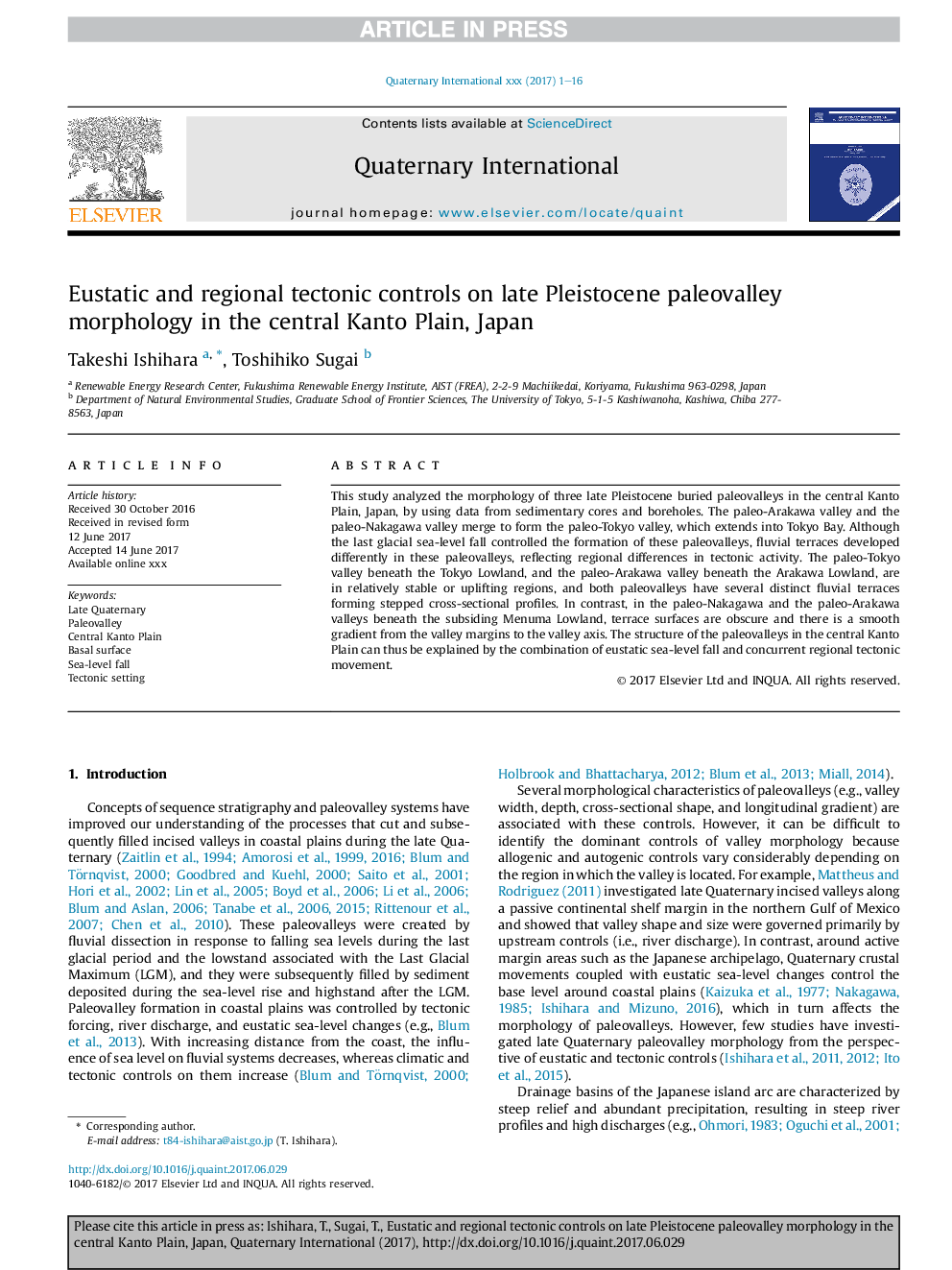| Article ID | Journal | Published Year | Pages | File Type |
|---|---|---|---|---|
| 7451275 | Quaternary International | 2017 | 16 Pages |
Abstract
This study analyzed the morphology of three late Pleistocene buried paleovalleys in the central Kanto Plain, Japan, by using data from sedimentary cores and boreholes. The paleo-Arakawa valley and the paleo-Nakagawa valley merge to form the paleo-Tokyo valley, which extends into Tokyo Bay. Although the last glacial sea-level fall controlled the formation of these paleovalleys, fluvial terraces developed differently in these paleovalleys, reflecting regional differences in tectonic activity. The paleo-Tokyo valley beneath the Tokyo Lowland, and the paleo-Arakawa valley beneath the Arakawa Lowland, are in relatively stable or uplifting regions, and both paleovalleys have several distinct fluvial terraces forming stepped cross-sectional profiles. In contrast, in the paleo-Nakagawa and the paleo-Arakawa valleys beneath the subsiding Menuma Lowland, terrace surfaces are obscure and there is a smooth gradient from the valley margins to the valley axis. The structure of the paleovalleys in the central Kanto Plain can thus be explained by the combination of eustatic sea-level fall and concurrent regional tectonic movement.
Related Topics
Physical Sciences and Engineering
Earth and Planetary Sciences
Geology
Authors
Takeshi Ishihara, Toshihiko Sugai,
